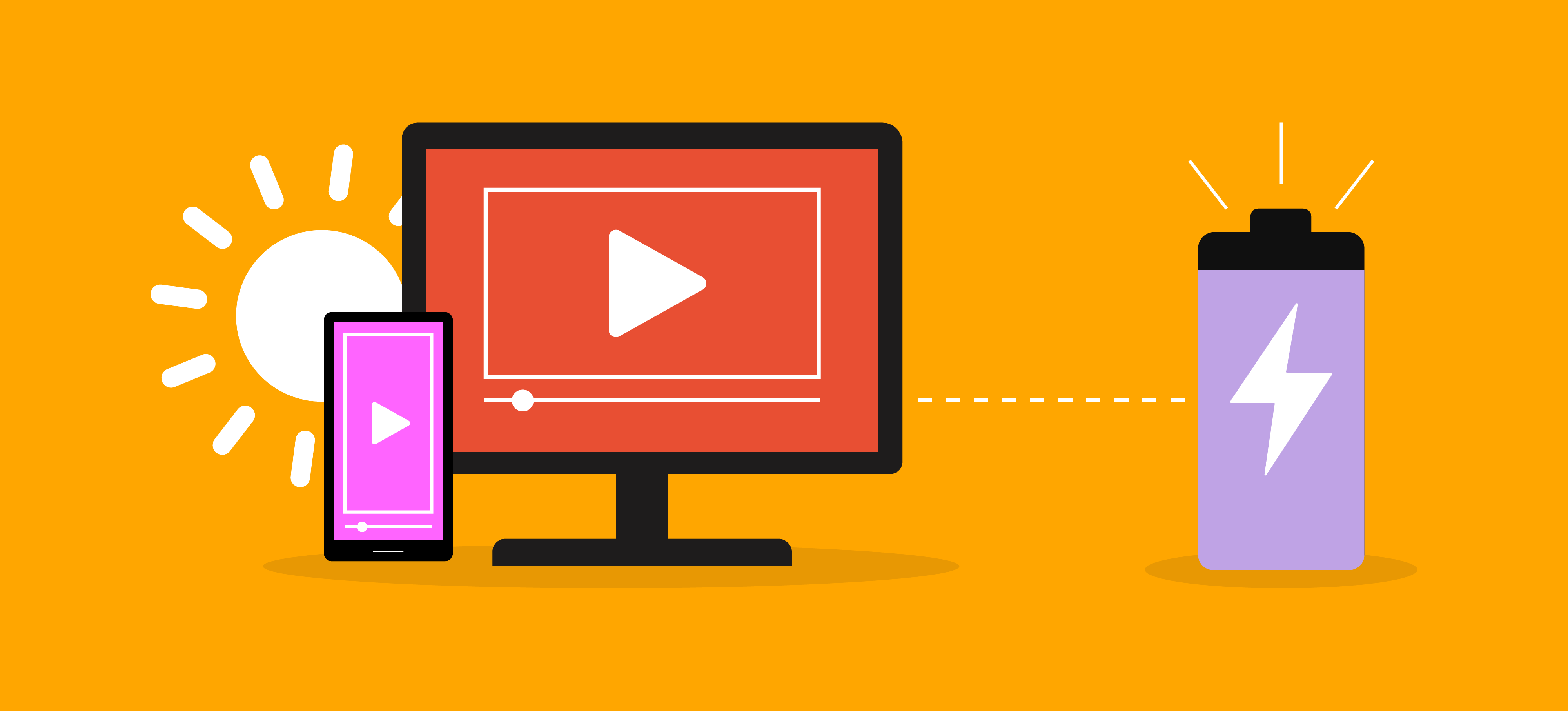Welcome to the first post in our "Transforming your digital footprint" series. Today, we’re kicking things off by exploring how much energy school-aged children consume during their summer holiday streaming marathons.
The summer holidays are here, and kids are spending more time streaming their favourite shows on Netflix, Amazon Prime, and YouTube. But have you ever wondered how much energy all that binge-watching consumes? Let's dive into the surprising energy costs of streaming and discover some easy ways to make our viewing habits more eco-friendly.
The hidden energy costs of streaming
Streaming is revolutionary, right? We now have instant access to thousands of movies and shows at the click of a button. But here’s the catch – all that streaming comes with a hidden energy cost. While households are becoming more sustainable through waste reduction, solar panels, and other eco-friendly products, many people don't realise how much energy the innocent act of streaming consumes. Let's break down where this energy goes:
- Data centres – These tech giants are energy monsters, using loads of electricity to store and stream your favourite content. They house thousands of servers and require constant cooling to prevent overheating, making them huge consumers of power.
- Internet networks – The data zipping from these centres to your screen also gobbles up power. This involves a complex network of routers, switches, and transmission lines, all of which need electricity to keep your stream running smoothly.
- Your devices – TVs, laptops, tablets, and smartphones all use electricity to bring those shows to life.
At Fasthosts ProActive, we're committed to cutting down on that power drain and take pride in our sustainability efforts.Our data centres run on 100% renewable energy, are ISO 50001 certified for energy management and have lots of other sustainable features. You can find out more about what we're doing in our data centres here.
However, not all web hosting providers take these steps, so it's crucial to consider where your energy is being consumed and choose providers who prioritise sustainability if that is important to you.
Do you know your household's energy use during the summer holidays?
One hour of HD video streaming can use up to 0.6 kWh of electricity. If your child streams four hours daily during the school summer holidays, they could use up to 100 kWh in bingeing alone. Let’s put this into perspective – the energy consumption of one child‘s streaming for the next six weeks is the equivalent to:
- Boiling the kettle nearly 24 times a day throughout the entire summer holidays
- Running an average electric fan non-stop for almost 12 weeks
- Doing about 167 loads of laundry
- Keeping an LED light bulb on continuously for over 11 years
How to stream smart and save energy
Don’t worry, we’re not saying you should ditch streaming altogether. However, here are some simple tips to keep your energy use in check:
- Adjust device settings – Lower the screen brightness and use energy-saving modes where possible.
- Stream in SD – Standard Definition uses way less energy than HD or 4K.
- Download content – Downloading shows for offline viewing consumes a lot less energy than streaming repeatedly.
- Pick energy-efficient devices – Look for gadgets with good energy ratings, such as Amazon Fire TV Sticks or Apple TV HD.
- Unplug devices – If you’re off enjoying the sunshine, don’t let your devices sit in standby mode, sucking up power – turn them off. Not only will you save energy, but probably the life expectancy on your tablet, tv or phone too.
Let’s make a change
Streaming is a blast, especially during the holidays, but it’s worth being mindful of the energy it uses. By tweaking our habits, we can make a big difference. Stay tuned for more tips on how to be more sustainable in our daily IT habits.
In the meantime, if you’ve got any questions about our sustainability efforts, or our solutions and services, get in touch. You can give us a call on 0333 111 2000 or book a meeting at a time that suits you.
Download and share
If you want to read this blog post offline, save it for later or share with a colleague, click the button below to download a PDF version.

